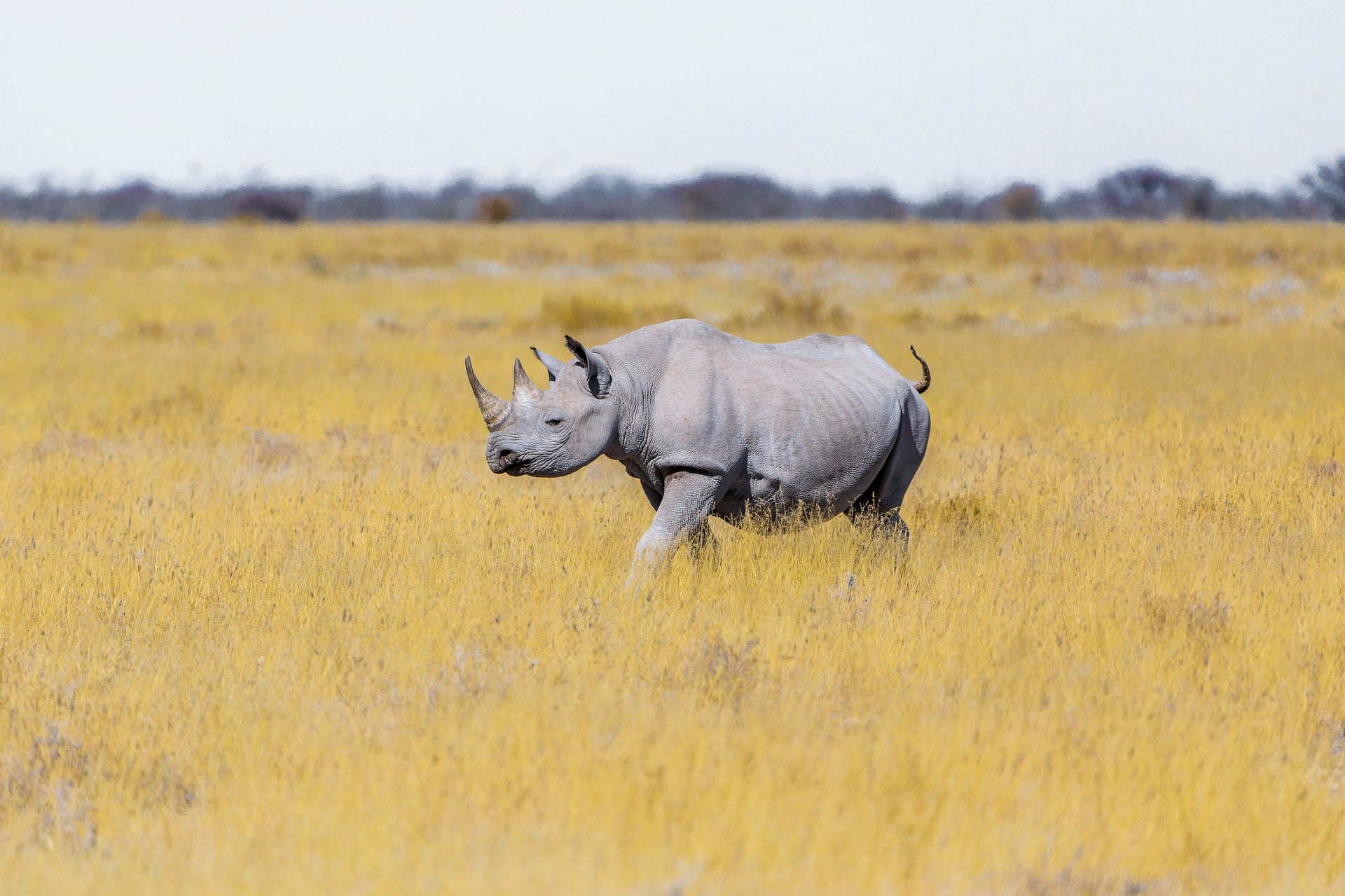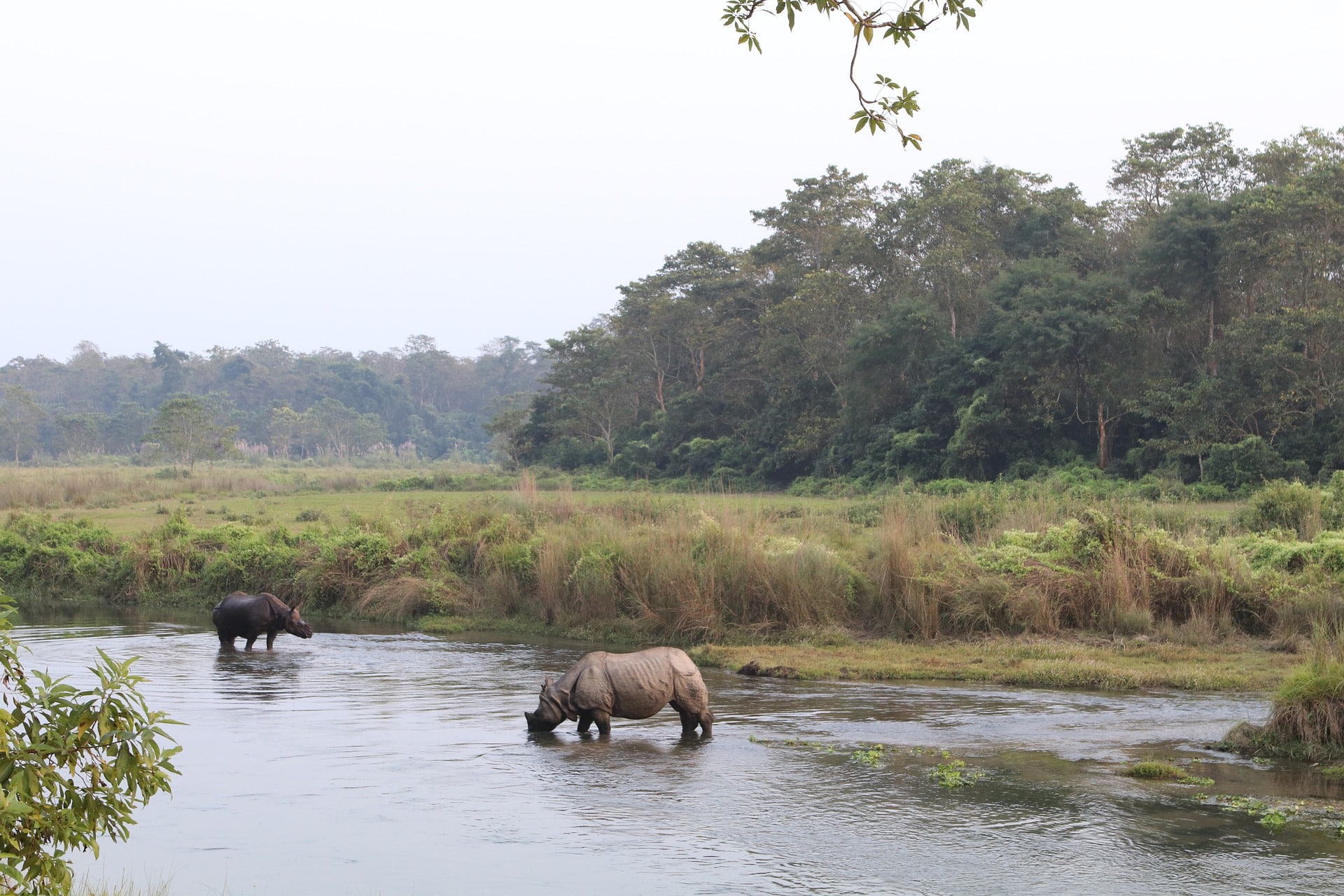Rhinos need a lot of land. They are constantly grazing, sometimes eating up to 110 lbs a day of the surrounding vegetation. Naturally, this means rhinos produce a lot of poop, which also needs a lot of space.
The area a rhino roams is called its home range. Not only is this where they eat and poop, but it is also where they find shelter, water, and potential mates. It is common for individual rhinos to have overlapping territories. In the case of black rhinos in the Serengeti, these territories can sometimes cover over 40 sq. miles!
Rhinos mark their territories with their urine and dung. Since rhinos have poor eyesight, using excrement is a much more effective way of communicating to other rhinos.
It is important that rhinos have enough space to spread out, as high population density in a concentrated area can lead to lower breeding success. Unfortunately, human pressures on rhinos’ natural habitats such as agriculture and urban development are making it increasingly difficult for rhinos to roam freely in their territories. Protecting rhinos doesn’t just require protecting them from poachers; they also need territory with all the necessary resources available to them. This is also why relocating rhinos to safer areas can sometimes be challenging.
The Rhino Recovery Fund is supporting proven conservation efforts to protect rhino habitats and relocate individual rhinos to either alleviate overcrowding, or to seed new rhino populations in restored, protected landscapes. This strategy will strengthen the ability of rhinos to survive in the face of human threats like poaching, habitat destruction, and climate change.



